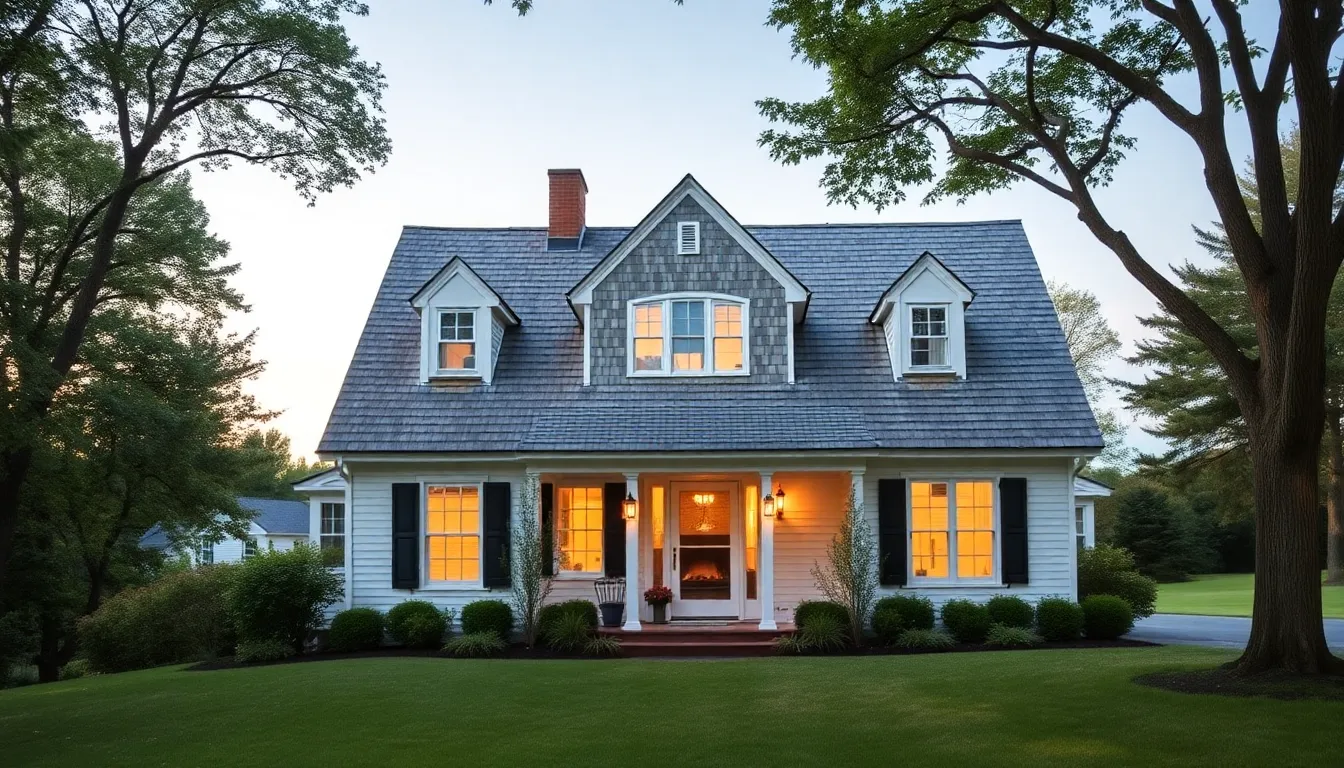Imagine a cozy abode nestled near the sea or amidst a forested neighborhood, where charm meets functionality. That’s the allure of a Cape style home, a classic that combines historical richness with modern comforts. With sloped roofs and symmetrical designs, these homes beckon like that favorite sweater you can’t throw away, warm, inviting, and oh-so-reliable. If you’ve ever dreamt of a space that tells a story while offering the perfect backdrop for life’s moments, stick around as we unravel the beauty and nuances of Cape style architecture.
Table of Contents
ToggleUnderstanding Cape Style Architecture

Historical Background and Origin
The Cape style home, often referred to as the Cape Cod cottage, traces its roots back to the early 1600s in America. Influenced by the humble Abodes of European settlers, these homes were designed to withstand New England’s harsh winters. Their straightforward construction reflected practicality more than pretense, showcasing a form of shelter that stood the test of time. As settlers made their way across the Atlantic, they brought this design with them, adjusting features to fit the climate and available materials. This made Cape homes both resilient and functional, embodying the spirit of colonial simplicity.
Key Characteristics of Cape Style Homes
So, what exactly sets these homes apart? Cape style architecture is marked by its steeply pitched gable roof, which not only looks charming but also allows for efficient water runoff, a practical feature in snowy regions. The symmetry is another standout characteristic. Windows are evenly spaced along the façade, often accompanied by a centered front door flanked by dormers. The exterior is usually clad in wood or shingles, lending a rustic, earthy appeal. Inside, you will find cozy proportions with an emphasis on functionality. Each element serves a purpose, from the straightforward floor plans to the presence of a fireplace, often the heart of the living area.
Modern Interpretations and Variations
Exterior Features of Cape Style Homes
Today’s Cape style homes embrace modern interpretations while cherishing historical roots. Many are adorned with larger windows for natural light, but still maintain that classic gabled roof. Some homeowners opt for a splash of color, painting their shutters vibrant shades to contrast against neutral siding. Roofing materials have also evolved: while traditional shingles are still popular, metal roofs are gaining traction for their longevity and efficiency.
Interior Layout and Design Elements
Inside, you’ll see an evolution of the layout. While traditional designs often featured small, segmented rooms, modern versions favor open-concept layouts, combining living, dining, and kitchen areas. This makes entertaining a breeze. Also, modern Cape style homes might incorporate energy-efficient appliances and smart home technologies, enhancing comfort without compromising the home’s aesthetic integrity.
Benefits of Living in a Cape Style Home
Energy Efficiency and Sustainability
One of the standout benefits of Cape style homes is their inherent energy efficiency. The steep roof design allows for excellent insulation, keeping the warmth in during chilly winters and staying cool in the summer. Many modern variants are built with sustainable materials, serving the dual purpose of being environmentally friendly and cost-effective. With rising energy costs, investing in a Cape style home may lead to long-term savings due to reduced heating and cooling bills.
Appealing Neighborhoods for Cape Style Homes
Maintenance and Care for Cape Style Homes
Owning a Cape style home also comes with specific maintenance advantages. Their simple, robust design means fewer intricate details to worry about. Routine maintenance like roof inspections, re-painting, and checking the insulation can keep your home in tip-top shape for years. Plus, the timeless nature of these homes often means they hold their value well, making them a wise investment.


